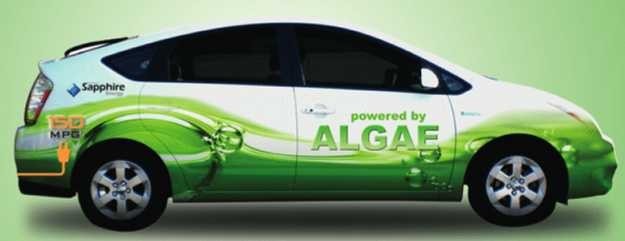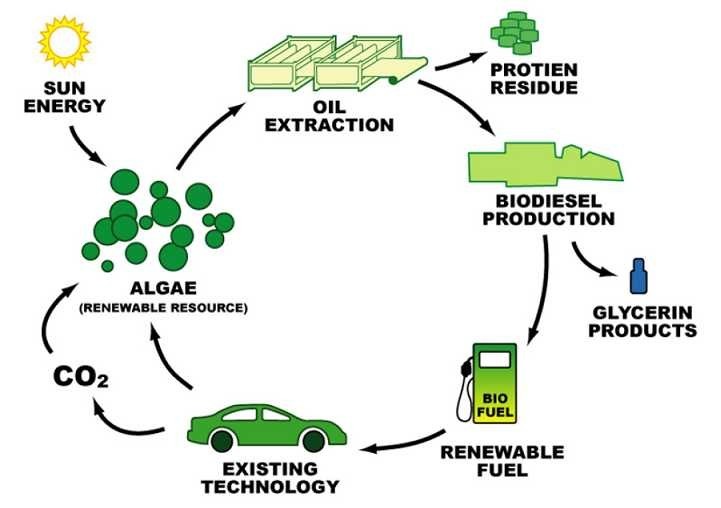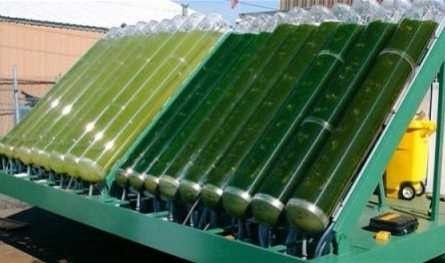Will Our Cars Run on Algae—a Greener Alternative Fuel?

Will Our Cars Run on Algae—a Greener Alternative Fuel?
Hopefully, in the next few decades we will be able to wean ourselves off of gasoline as we develop other types of fuel that are more efficient and better for the environment. Electric and hybrid vehicles are now commonplace and hydrogen and biodiesel vehicles are also gaining in popularity, but what do you know about the greenest fuel of them all—algae? At Pacific Elite Collision Centers Fullerton West, we’re always looking for ways to save the planet and algae-based fuel looks like it might fit the bill, in many ways.
That’s right. When most people think about algae they think about that green goopy stuff found floating in lakes and ponds. But, believe it or not—pretty soon you’ll be able to power your car with that sticky green scum.
Microalgae is made up of millions of single-celled organisms that are capable of photosynthesis. This means they absorb sunlight and then convert it into energy. Some kinds of microalgae produce oils to store that energy and those oils are what scientists have figured out to turn into fuel for our vehicles.
Although a great idea for its renewability and low pollution, there are still challenges. According to several news sources, there’s only a very specific type of algae that will work for this fuel so scientists need to figure out how best to harvest this strain. Also, it is incredibly expensive. Once those hurdles are overcome, then algae stands a chance of becoming a widely accepted fuel source.

This fuel is better for the environment because it reduces pollution and is a true renewable resource. Algae-based fuel is already in use so it’s not just a pipe dream. It powered a United Airlines flight from Chicago to Houston back in 2011 and Japan’s Euglena Co. will soon be using it to power a fleet of buses in that country.
Developing algae as an automotive fuel began seriously 6-8 years ago when the Algaeus, the world's first algae-powered plug-in electric hybrid vehicle came onto our radar as a prototype concept car. In 2009, the Alegaeus completed a 10-day drive from Los Angeles to New York City, averaging 147 miles per gallon in the city, where it runs on electricity alone. On the highway, where it works as a hybrid, it averaged 52 miles per gallon. Most amazing of all, the drivers of the car stopped only six times for fill-ups. With a nickel metal hydride battery and a plug to the hybrid car, this vehicle's engine runs on algae fuel instead of gasoline and for this cross-country test drive, the Algaeus used only approximately 25 gallons from coast-to-coast.
A handful of startups have cropped up to develop algae as a fuel, including Sapphire Energy, a company that produces algae fuel on a farm in the deserts of New Mexico.
Proponents of algae fuel claim that it has the potential to be a new source of 100 percent carbon neutral energy that won't require changing the country's current energy infrastructure. That's because algae has the identical chemical composition as gasoline and is, therefore, compatible with existing gasoline technology, from refineries to car engines.
Unlike an oil rig, an algae farm can be located almost anywhere, and does not require converting farmland or nature preserves. Land that is currently sitting and not fulfilling any purpose is ideal for algae production, even landfill or other forms of re-used land.

Right now, algae fuel isn't obtainable by consumers, but its developers hope to make it available commercially within the next five years. Algae has gone from being a concept to becoming a reality and scientists, carmakers and environmental leaders all over the planet are gravitating toward this highly green and efficient alternative fuel.
If we’re going to beat our addiction to gasoline in this country and worldwide, we should take a long look at algae, because it offers all of us a healthier and more sustainable way for transportation today and in the future, brought to you by all of the people here at Pacific Elite Collision Centers Fullerton West in Fullerton .
Sources: Wikipedia, the Wall Street Journal and Forbes
















Social